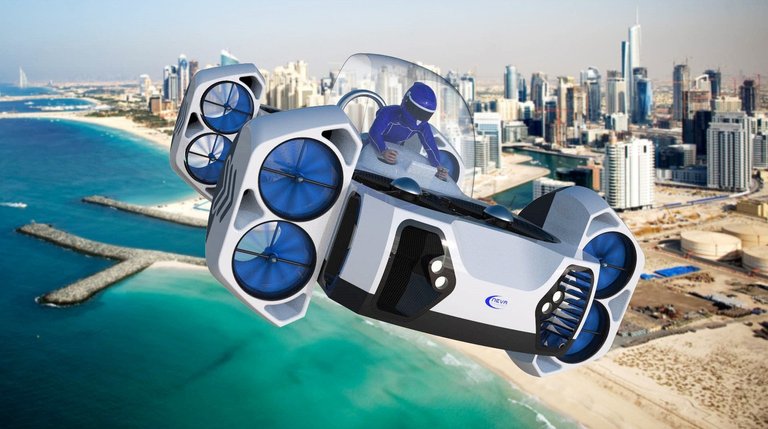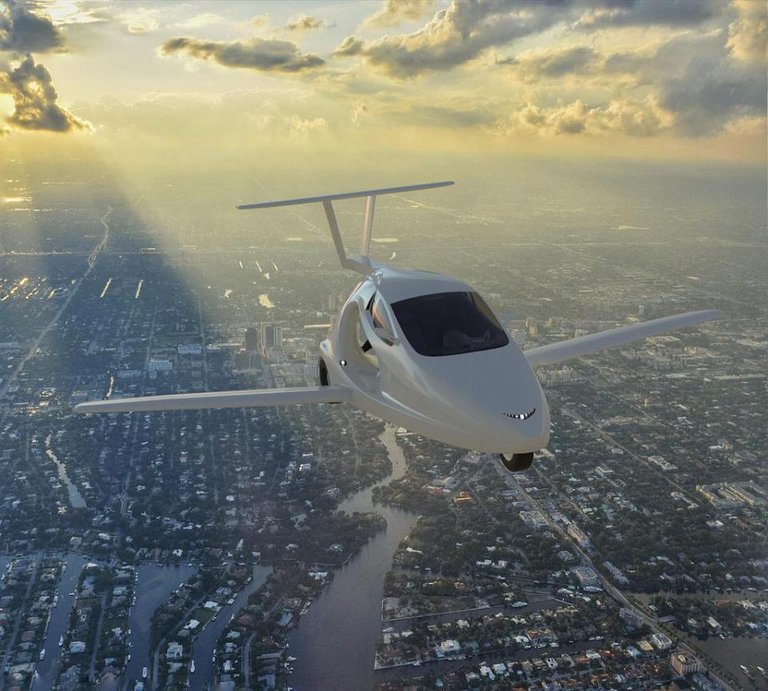
Image Source: Wired
What do you think it would be like to own a flying car? Could this be a possibility in our lifetimes? It most certainly could be! The future of flying cars holds a lot of promise and potential as we get close to moving into the next decade.
But I should warn you, if I've made you excited and you're now throwing on your coat getting ready to run out the door right now to buy one, hold your horses. The models being manufactured at the moment require that drivers obtain a private pilot's licence. The Skyblade, a flying car I'll discuss in detail in this article is a two-seater vehicle, which starts at £90,000.
The fact of the matter is that the impossible is now very possible.
Flying cars which many thought remained solely the domain of science fiction movies exist in real life and people with the wealth and means to do so are in the process of buying them!
If I've perked your interest at this stage, let me delve a bit deeper into this business of flying cars and provide some supporting evidence for the points I've made above.
In recent news it seems that a comapny called Sampson Sky has announced that it’s now holding 615 reservations for its new Switchblade kit-built, flying sports car!
The company sponsored a Sun ‘n Fun forum a while back about the state of the flying car industry. At the event, visitors had a chance to chat with the Switchblade's creators.
Just two years earlier, the Samson Sky reservation program had been launched at Sun 'n Fun when potential customers saw a sneak peek of the wing swing mechanism for the vehicle. Getting down to the dirty details of it all, the Switchblade is reported to have the power-to-weight ratio of a 2017 Corvette.
People from all over the globe want to get their hands on these based on the fact that the company says the Switchblade reservation list includes enthusiasts from over 15 countries.
Just because they are cool doesn't make them cheap though! Sampson Sky anticipates the price of a VFR Switchblade to be about $140,000.



All of this takes me back and I have memories of watching the movie 'Back to the Future' in the 1990's and being completely amazed. Lets be honest folks, just the idea of a car that could time travel is an exciting proposition.
But my oh my, when I saw the sequel, 'Back to the Future 2' it made me even more excited! In this movie we saw hoverboards, automatic clothing that could dry itself and yes, flying cars!
Even though the Switchblade will cost a pretty penny, it seems incredibly cool and if I had a pilot's license and was in a position to buy one, I do believe I would. A few of its key features that I forgot to mention above include its extendable wings and tail. Beyond the wings and tail being an outstanding feature, when it comes to technical specifications, apparently it can reach altitudes of 13,000ft with a lot of help by its rear-mounted propeller.
Now here are a few more interesting facts about the Switchblade. They have been designed as three-wheeled two-seaters vechicals are are completely road legal. On the road they can reach a top speed of 100mph but they are only allowed to take off and land at airports.
Samson Motors is a U.S. based company located in Oregon with plans to launch the cars within months. They even come equipped with parachutes. Its extendable wings and tail are adjustable and needed as a means to steer it through the air.
Anyways, I thought this new hoopla surrounding flying cars was pretty cool so I thought readers might be interested in learning more about it.
Let me turn your attention to another possibility for getting around in the future. Get this, not only are there fully electric motorbikes well superbikes rather being made but they are being constructed with 3d printing technology!


Image Source: 3D Print

I don't know about you, but if someone mentions electric superbike and 3d printing in the same sentence I get excited.
For the past few years the CRP Group has been working with the Energica Motor Company to develop all-electric superbikes.
That is freaking awesome! Digging deeper into their work around electric superbikes I've uncovered the fact that many of the parts for the Ego and Ego Corsa bikes are being 3D printed with CRP’s Windform composite materials.
These superbikes are hitting the road as made evident by the newer Corsa being scheduled for development at the 2019 FIM Enel MotoE World Cup. Progress is mounting becoming more and more apparent as they show off their new tech at events like the recent French MotoGP. At the event a brand new prototype of the bike made an appearance on the track for the first time in public.
After the Ego Corsa was taken for a demo lap at the French MotoGP by former MotoGP rider and 250cc race winner, championship contender and multiple podium finisher Randy de Puniet, he had the following to say about the experience:
“The connection with the throttle and the power delivery are very smooth,” he said. “The bike reaches high speed in a very short amount of time, and that’s a good thing. Another good point of the bike is that the rear is very stable when opening the throttle. It’s a very easy bike to get to grips with, so it would be fun to be racing the Energica Ego Corsa against twenty or more riders on identical machinery. I am really pleased with this experience and grateful for the opportunity; I hope my feedback will help Energica continue in the right direction.”
Now, am I saying that we are all going to be getting around by flying cars or electric superbikes in the future. Probably not, at least not right away. But these are just a few examples of new high-tech transport options hitting the market. One technology that is much more likely to be used on a daily basis in regard to transport is that of self-driving cars. This is an area that I've already written quite a bit about but I'll just quickly summarise where the markets are at with that at the moment.
Companies like Uber, Google and Tesla are racing to become the champions of self-driving cars but there is also stiff competition by other competitors like Waymo and the likes...
One bit of recent news I found incredibly interesting is the fact that Volvo now offers a car that will let you take a nap or watch movies on highways!
According to a recent article published in CNBC, Volvo wants customers to know their highway commute to and from work may soon involve a nap, a meal or a flick!
The Swedish automaker (which is owned by Chinese automotive company Geely) plans to offer a true self-driving car by 2021, Volvo Senior Vice President of Research & Development Henrik Green told automotive website Jalopnik on Wednesday. That means within three years, Volvo drivers will have the option “eat, sleep, work, watch a movie, relax, do whatever,” while their autonomous car drives on the highway, Green says.
So to make a long story short, we are getting there. The future is creeping up upon us and I'm always shocked and amazed to see the incredible pace of growth and development taking place across all industries.


Image Source: CNBC

Do you see yourself owning a self-driving car, a flying car or an electric superbike anytime soon?
There are some incredible feats of engineering and computer science being applied in all of these applications. Personally I'd want to let the dust settle and let others try out these new technologies first before taking the leap to use one or own one of these vehicles.
Do you see any dangers involved with flying cars, self driving cars or superbikes zooming across your neighborhood?
Which of these new forms of transportation if any seem appealing to you?
Thanks for reading.
Authored by: @techblogger
In-text citations sources:
World’s first 200mph flying sports car the Samson Motors’ £90,000 Switchblade is set to soar by next Spring - The Sun
Switchblade Sponsors Flying Car Forum at Sun ‘n Fun 2018 - Flying Mag
CRP Group Makes Progress, Showcases 3D Printed Electric Superbike - 3dPrint
Move over Tesla, this self-driving car will let you sleep or watch a movie during your highway commute - CNBC
Image Source:
3dPrint
CNET
Pexels
Flying cars have been part of man's future tech fantasies for ages actually. However, even if this becomes commercially viable at some point, I'm guessing it would be another nightmare trying to coordinate traffic for vehicles that can move in 3 dimensions instead of 2 and the practical aspects of it might just be too cumbersome to manage in our lifetimes.
Battery operated sports cars (doesn't Tesla create that already) tand bikes - well they will be here sooner than you know
Agreed... flying car's challenge isn't the technical feasibility rather sustainability planning.
We sincerely hope that you will achieve success in whatever work you are going to do.
Good luck
amazing